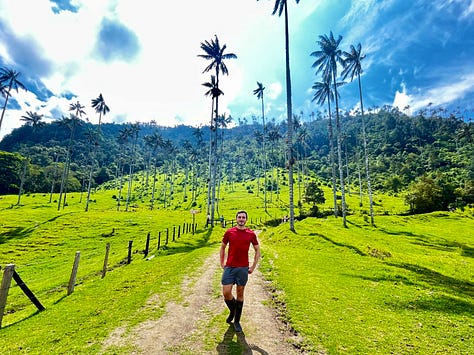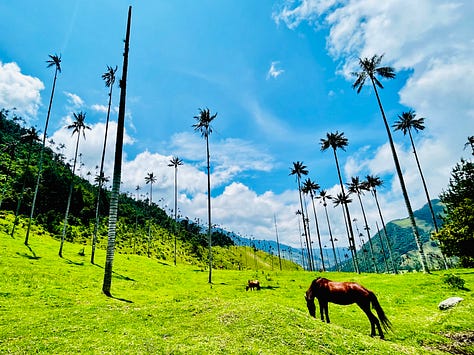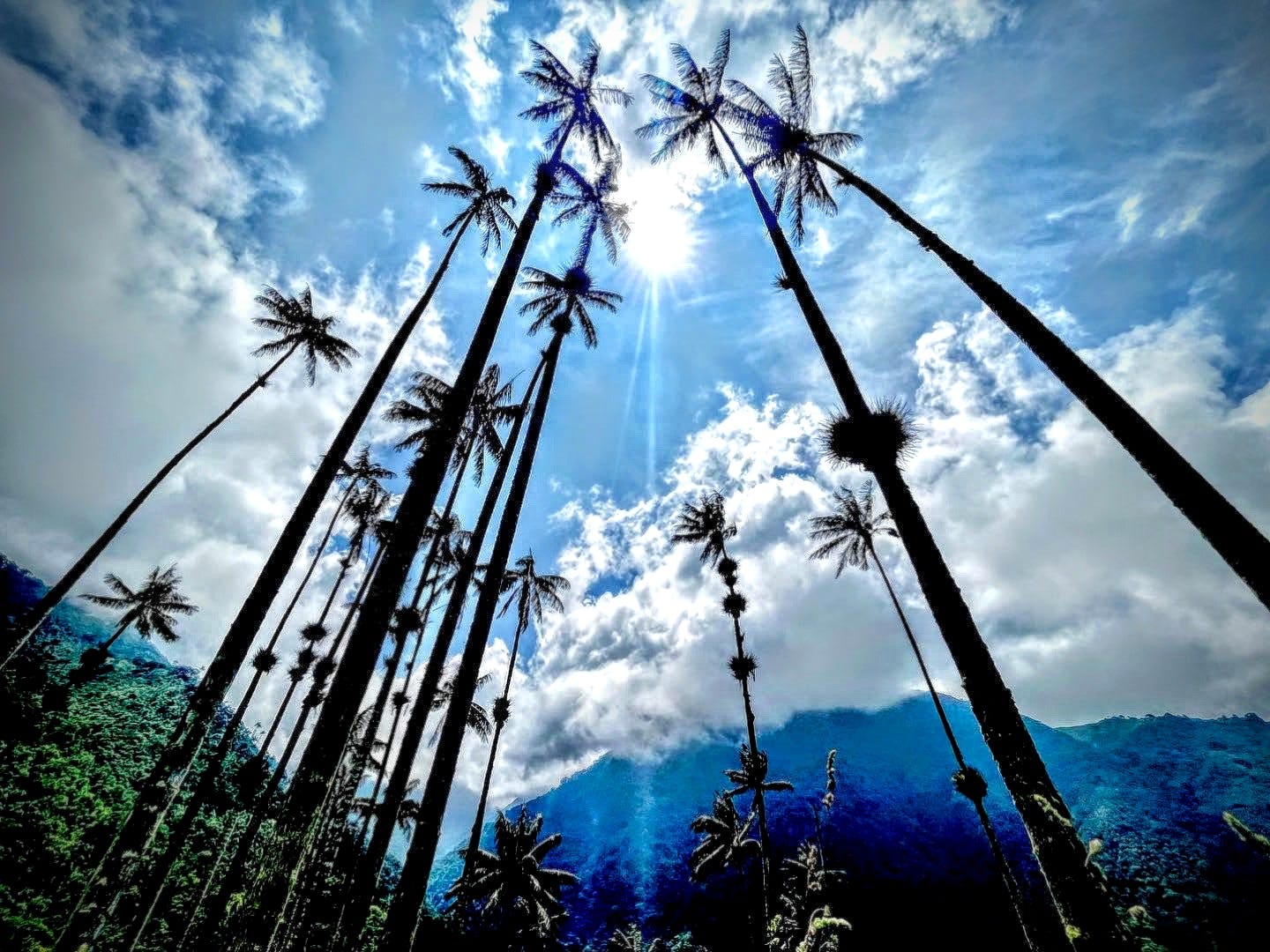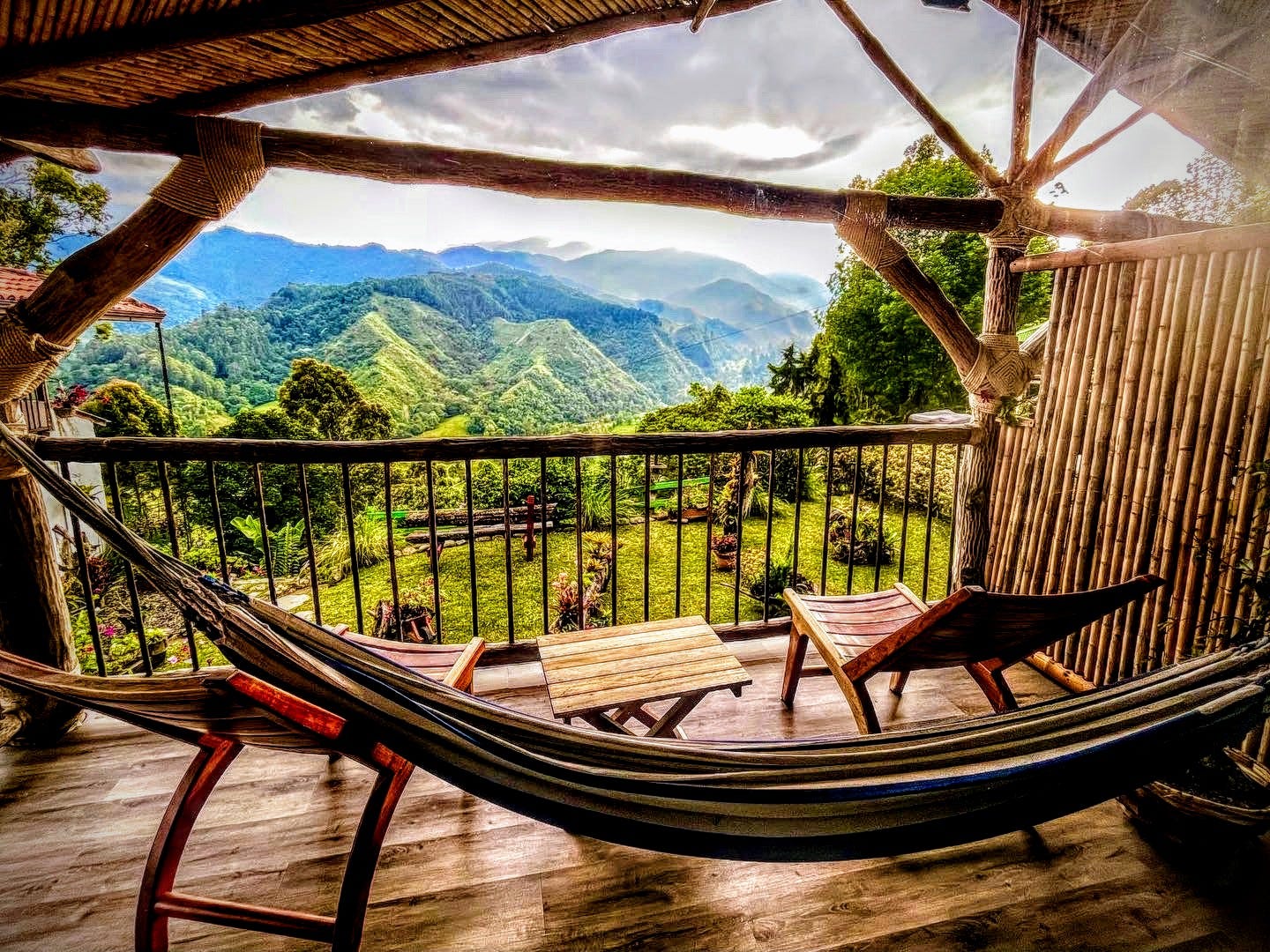Colombia's Sky-Scraping Wax Palms, the Tallest in the World: A Symbol of Pride in Peril
Colombia's beloved national tree teeters on the brink of extinction, caught in a desperate struggle between national pride and the unrelenting economic pressures of ranching.
📍 Salento, Colombia
In the foothills of the Colombian Andes, a botanical anomaly reaches for the heavens. The Quindío wax palm, the world's tallest palm species, can reach the dizzying height of 230 feet (70 meters). Their slender trunks and feathery crowns have cartoonish, Seussian proportions and are often shrouded in an enigmatic mountain mist. These record-breakers are beloved by Colombians – the wax palm is their national tree. Yet, this symbol of national pride faces a perilous decline.
Beyond the post card pictures, these wax palm ecosystems hold unique biological value. Their seeds feed a web of birds and mammals, and in the 19th century, the trees' wax served in candle production. Now, rampant deforestation threatens their existence. In their primary stronghold, the Cocora Valley, only a quarter of these giants remain. Even among the surviving palms, many are suspected to be "towering corpses," biologically declining or deceased yet still retaining their physical form.
These trees have particular preferences. Unlike most palm species, they flourish only thousands of meters above sea level. While each wax palm has the potential to produce up to 24,000 fruits per year, less than 8 percent of their seeds ultimately germinate. A wax palm can take five decades to mature, but can be felled in minutes. Ranchers clearing land for cattle grazing are the primary cause of declining wax palm numbers. Grazing prevents the concentration of trees needed to shade the palms' sensitive seeds, hindering their ability to sprout.
While the Cocora Valley in the heart of Colombian coffee country draws the tourist crowds, the world's highest density of wax palm is now found in the lesser-known Tochecito region. But here, conservation funds won't outbid ranchers eager to clear land. And Tochecito, a former hotbed of the FARC guerrilla group, remains far off the government's radar. Could an overlooked part of the country harbor the key to this botanical wonder’s salvation?
Today, Colombia finds itself on the precipice of losing its cloud-piercing national tree. Economic realities and commercial interests are encroaching on national pride. Standing among their dwindling numbers in the Cocora Valley, I felt a sudden urgency. This isn't just about losing another beautiful tree; it's a sharp nudge that natural beauty, increasingly scarce, becomes less about postcard vistas and more about ecological reckoning.









